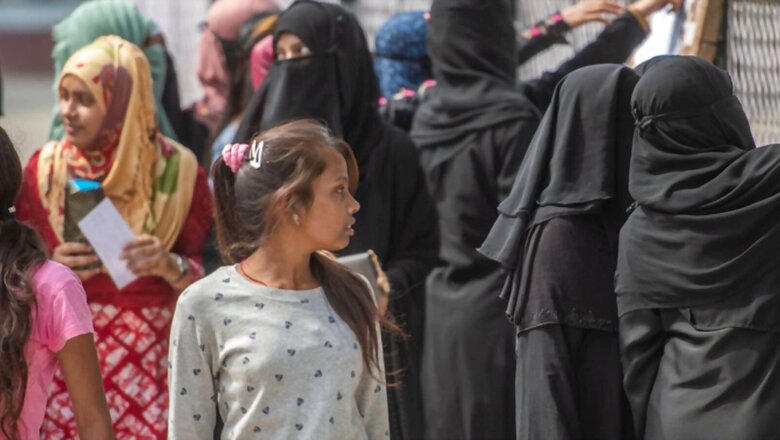
views
As one witnesses the tragic developments in Afghanistan, the stark realities and consequences of international intervention stare us in the face, once again. The story of international intervention to ‘defend’ the rights of the people where one makes an intervention and the dramatic withdrawal as a ‘face saver’ using the ‘mask of enlightened self-interest’ has become all too familiar. What happens to the common people in such a country, at the end of the military adventurism, is a tale of unmitigated disaster. Afghanistan seems to be a classic example of this textbook case of intervention and collapse.
Close to five decades ago (from 1973-77), I had a chance to live and study in Kabul as my father was there on a United Nations assignment. During those four years, I once had the opportunity to travel the length and breadth of the country. Soon after we arrived in Kabul in 1973, the rule of King Zahir Shah ended as he was overthrown by his own brother-in-law Mohammad Dawood, in an overnight, silent and bloodless coup. In those days of the mid-1970s, culturally, Afghanistan had been following the Iranian model, as seen in the days of the Shah of Iran. Men and women wearing the latest fashion, Western clothes was quite common. Women from middle-class and well-to-do families were seldom seen in the ‘chaddor’ (veil). A gentle breeze of modernity seemed to be sweeping through society.
The 1970s saw the Cold War at its height. The confrontation between the United States and the-then Soviet Union was raging. As one looked around, the signs of American and Soviet presence were patently visible. If the Soviets built the roads connecting to the northern borders, the American support was seen in the South and East, leading on to the Iranian border. If the Soviets built a utilitarian Kabul airport, the Americans built a swanky Kandahar airport. The competition between the superpowers was obvious to even the casual observer. The Afghans proudly said that they could demand whatever they wanted from the two rival nations and played one against the other. The consequence of this dangerous game of brinkmanship became obvious in the later years.
In the 1970s, India too had a visible presence in Afghanistan. In those days, there were close to 500 Indian families living in Kabul. They were there as part of India’s Technical Assistance and Cooperation (ITAC) Mission. The Indian presence was so widespread that there was a Central School run by the Indian Embassy in which I studied from Grade 8 to Grade 11. India had built a children’s hospital in Kabul. The story goes that when the date of the inauguration approached (it was to be done by the President of India), the Afghan government sought a meeting with the Indian President. At the meeting, the Afghan health minister wanted to hand over the foundation stone of the hospital (a former Indian Vice President had attended the foundation-laying function) as he claimed that the Afghan government had no resources for the management of the hospital once inaugurated. India agreed to ensure that its doctors and nurses and medical supplies were made available for the first five years. It was then that the hospital was inaugurated. Later, at the end of the five years, the Soviets came forward to offer support. One is recalling this incident only to emphasise the point that the Afghan governments had got used to seeking favours from across the world. In the days of the Cold War, as it was readily available, they became heavily dependent on others. History, thus, often repeats itself.
The last time I went to Kabul was in 1979, the year the Soviets marched in. In the summer of 1979, a few months before their invasion, it was clear that the Soviets had entrenched their presence in the country. If the 1973 coup that brought Mohammad Dawood to power was a peaceful change, the 1978 communist-inspired coup saw a lot of bloodshed in which Dawood, his entire family and supporters were killed. This was the forerunner for the Soviet invasion of Afghanistan on the eve of Christmas of 1979. The Soviets claimed that they had been invited by the Afghan government (a puppet communist regime) to intervene! This was the height of the Cold War and the Americans armed the rebel groups, which later took the form of the Mujahideen. When the Soviets withdrew, it was the same arms supplied by the United States to the anti-communist fighters that were then used against the Americans! A familiar story that is playing out once again.
Afghanistan is not merely the story of a state that became increasingly dependent on outside powers. It is also a state that saw corruption at the highest levels. It was a society where the gap between the opulently affluent and the abysmally poor was clearly visible. Nepotism and favouritism was always an explanatory factor when analysing why someone got a benefit, position or status. If one were to list out the families of top leaders of Afghanistan, it may not be difficult to trace their presence in Western nations, enjoying an affluent lifestyle from resources garnered during the days in power. This once again seems to be the case with people who enjoyed power in Afghanistan ever since the American military presence in the country. Afghanistan is today paying the price for the selfish self-interest of its political and ruling class. This power elite made the country a tool in the hands of the mighty nations in their global rivalry. The innocent people of the country are paying the price for this cavalier attitude of its leadership.
Prof (Dr) Sandeep Shastri is Vice Chancellor, Jagran Lakecity University, National Coordinator of Lokniti Network, and a Psephologist and Political analyst. The views expressed in this article are those of the author and do not represent the stand of this publication.
Read all the Latest News, Breaking News and Assembly Elections Live Updates here.



















Comments
0 comment